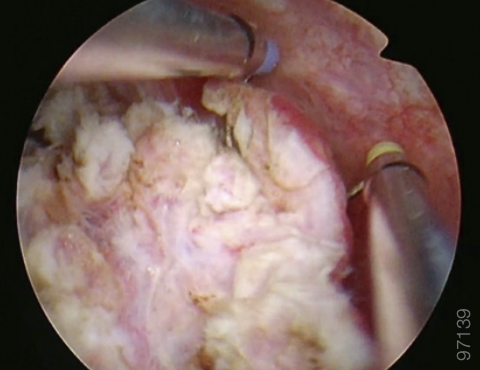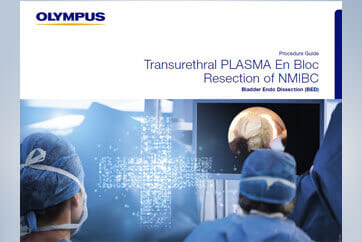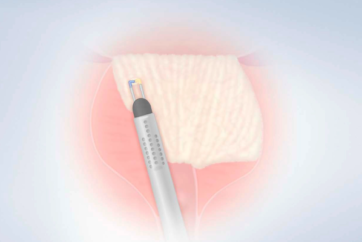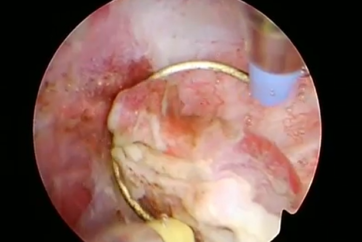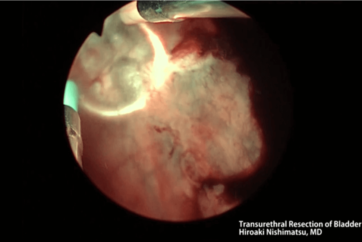4. Evacuation of the Tumor
Transurethral PLASMA En Bloc Resection of NMIBC
Description
- < 2 cm specimens can easily be grasped between the loop and the extremity of the inner sheath, which is then disconnected to allow the safe extraction of the specimen within the outer sheath.
- Large specimens are sometimes amenable to the same manner of extraction. Alternatively, the specimen can be fragmented either by standard resection of the exophytic bulk of the tumor before completing the en bloc dissection of the tumor insertion onto the bladder wall or by fragmenting the en bloc specimen at the end of the dissection.
Key Insights
- At the end of the procedure, it is helpful to leave a few strands of fiber between the tumor and the site of resection in order to avoid the floating of the specimen and facilitate its retrieval.
- While it is a rare location for primary tumors, many recurrences are observed at the anterior part of the bladder. Floating tumor cells have been implicated in early recurrences. Debris and microbubbles are often observed at the dome at the end of the procedure; they can be easily removed by suction by overinflating the bladder, inserting the tip of the resectoscope close to the debris, and disconnecting the inner sheath.
References
1
Yuen-Chun Teoh, J., MacLennan, S., Wai-Shun Chan, V. et al. An International Collaborative Consensus Statement of En Bloc Resection of Bladder Tumor Incorporating Two Systematic Reviews, a Two-round Delphi Survey, and a Consensus Meeting. European Urology 2020 Oct 1; 78(4):546-69.
1
Babjuk, M., Burger, M., Compérat, E. et al. EAU Guidelines on Non-muscle-invasive Bladder Cancer. European Association of Urology 2020: 14-15.
1
Sugihara, T., Yasunaga, H., Horiguchi, H. et al. Comparison of perioperative outcomes including severe bladder injury between monopolar and bipolar transurethral resection of bladder tumors: a population based comparison. J Urol. 2014 Nov;192(5): 1355-9.
- Content Type

